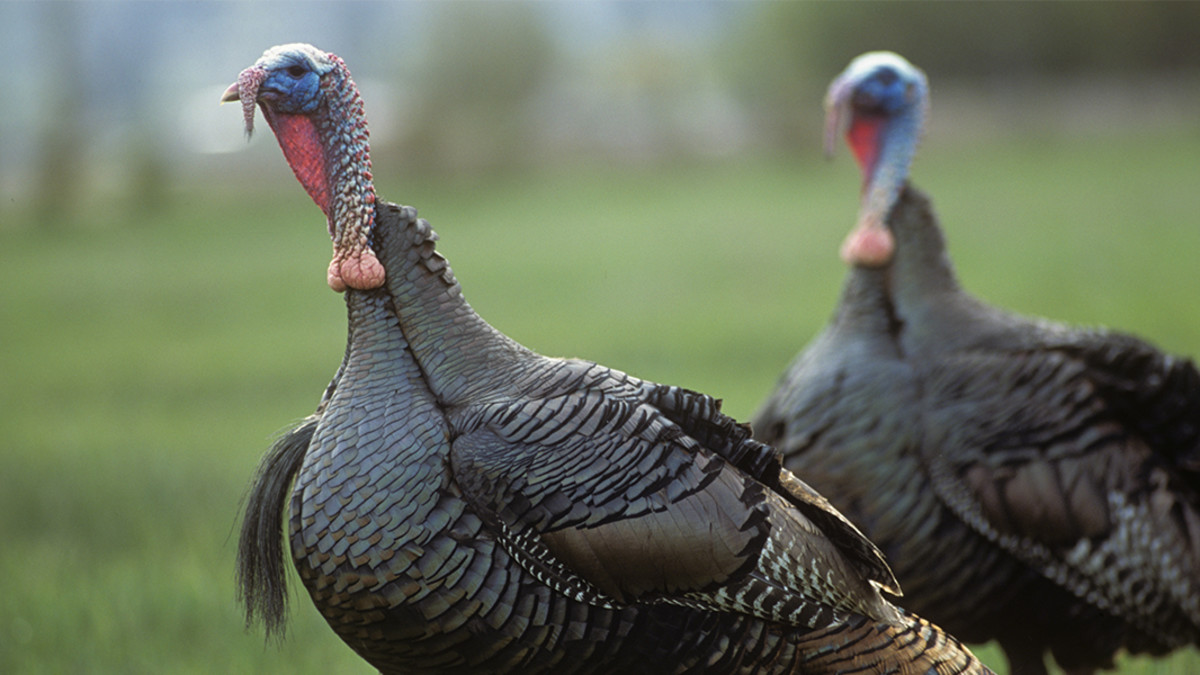
Once you have located a gobbler, it is now time to close the distance and get close to the bird. This is a delicate process because even just a small amount of movement can cause the bird to spook and leave the area.
Sometimes you’ll hear a gobble that’s so close, say a hundred yards or less in wooded cover, even farther away in open country, that you can’t risk moving out of fear that you’ll spook the bird.
In these cases, it’s best to immediately take a position against a tree or other backdrop and hold tight. The bird could be headed your way, and you don’t want to let your movements scare it off. At other times, you might hear a gobbler that’s pretty far away.
Sit Tight or Stalk In Closer
Such situations present you with a conundrum. Some turkey hunters take an aggressive approach and try to close as much distance as possible between themselves and the gobbler. Other hunters are more cautious, preferring to hold tight and start calling even if the bird is several hundred yards away.
Personally, I like to move toward gobblers whenever possible. Not only do I enjoy sneaking in on turkeys just for the fun of it, but I also find that toms are much more receptive to calling once you violate their personal space and get so close that they simply cannot ignore your calling.
The Art of Turkey Hunting
There’s an art to approaching a turkey that you intend to call in. First off, you need to practice utmost stealth. Under no circumstances should you give the bird a chance to see or hear you. If it does, the game is over. Use brush, timber, or topography to shield your movements from the bird.
Second, it’s difficult to guess exactly where the bird is. Humidity, the denseness of cover, and what direction the tom happens to face when it gobbles can all create a lot of confusion about where the bird happens to be. And keep in mind that the turkey is likely to move around a bit. Even if your original guess about his whereabouts is correct, the reality on the ground will be shifting all the time as the bird feeds or pursues mates.
There have been several times when I was putting a slip on a turkey that seemed to be gobbling from a fixed position when I happened to run smack into the bird when I was still a couple hundred yards away from where it was supposed to be. In these situations, when you and a turkey surprise each other, killing the bird is out of the question. It’ll be gone before you’re able to throw the safety switch on your shotgun.
Knowing how close you can get to a gobbler takes time and practice. Only the birds themselves can teach you what you can and can’t get away with. Plus, each situation is different with regards to ground cover, topography, and the wariness of the birds. I have slipped within shooting distance of many turkeys without the birds knowing I was there, but admittedly it’s usually happened in remote Western locations where the turkeys receive little hunting pressure.
In high-pressure areas typical of the eastern U.S., you need to be a lot more conservative. If you can get within a hundred yards of a turkey without spooking it, consider yourself lucky. In many situations, even getting within 300 or 400 yards is out of the question due to open, flat terrain that provides no plausible routes for a stalk.
In thick cover it’s often possible to get closer than 100 yards, but I rarely find myself getting closer than 75 yards to where I suspect a bird to be hanging around. At that distance, there’s just too much that can go wrong. Rather than risk getting closer, you should find a place to get set up.



